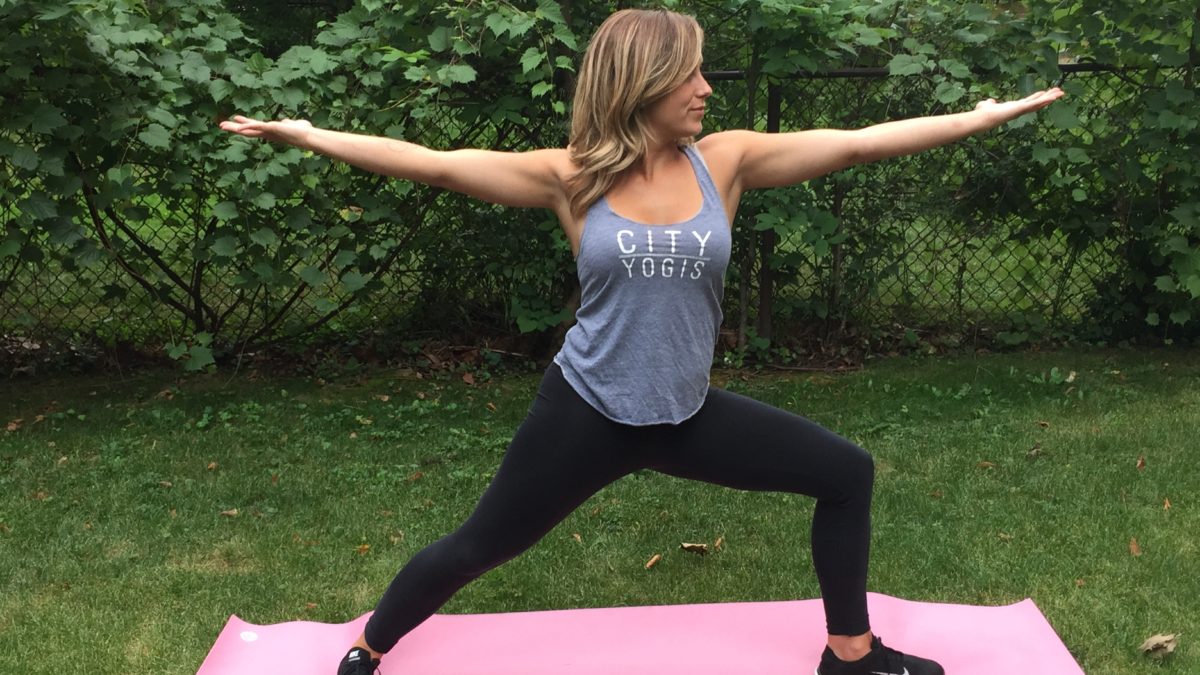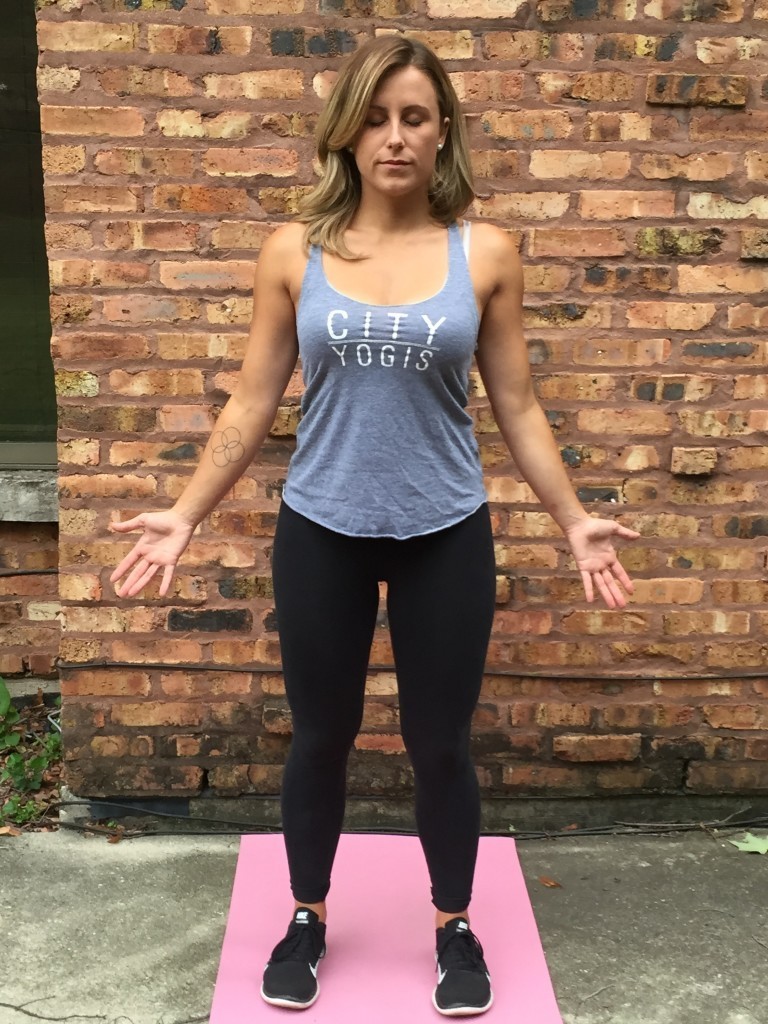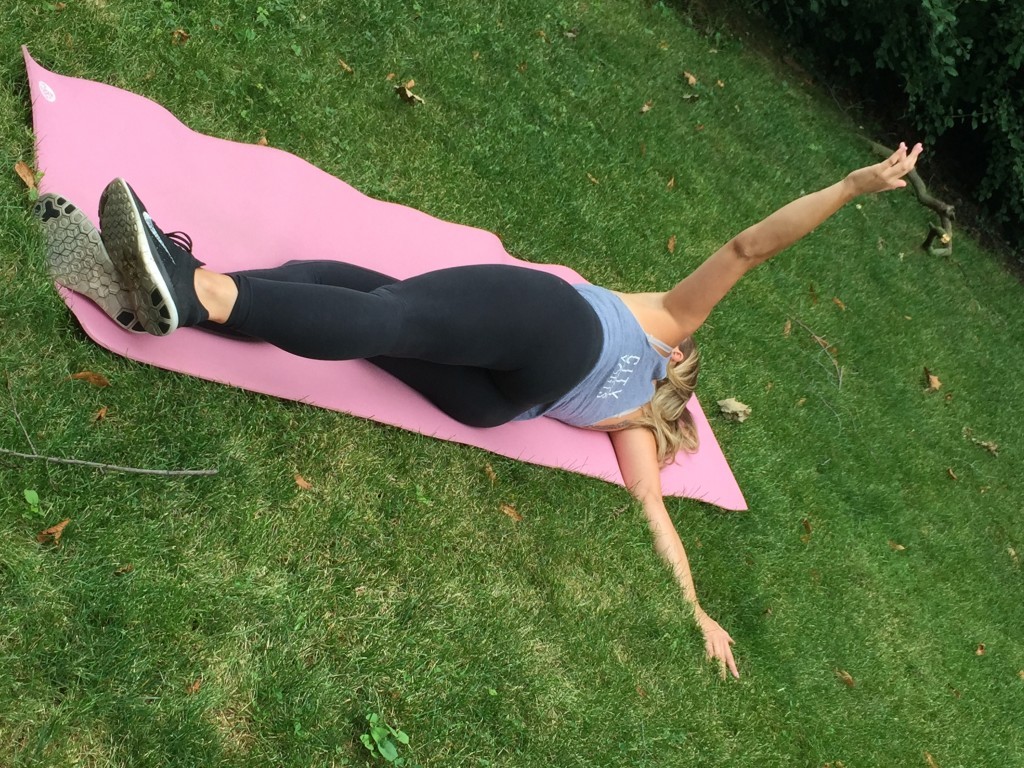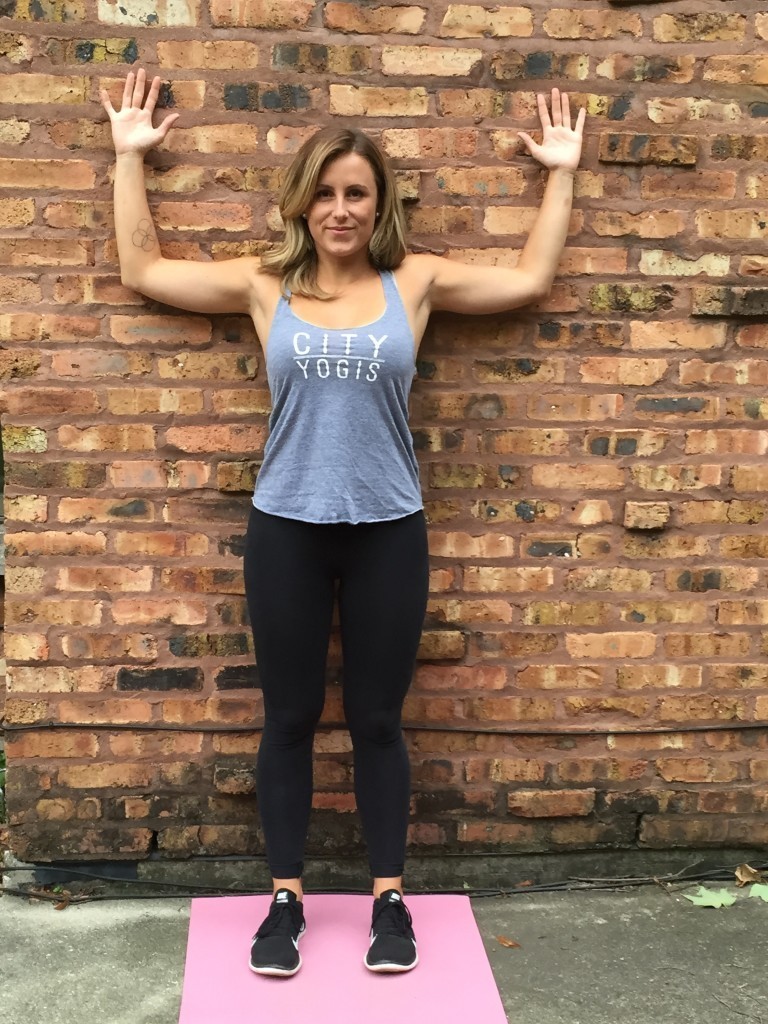Climbing Fitness #3: Rotator Cuff Care

This is the third installment of a new series on how to stretch and strengthen those climbing muscles. It is brought to you by Ashley Edwards and Kate Evans, co-founders of City Yogis in Toronto.
As climbers we can all agree, having even the smallest pain in your shoulder can be a huge pain. Unfortunately, many climbers will experience some kind of shoulder strain or injury during their climbing career. The overhead motion of our arms as we climb is the primary culprit.
The shoulder joint is a ball and socket joint that connects the bone of the upper arm with the shoulder blade. The most common injury of the shoulder is the in rotator cuff (representing over half of the shoulder strains athletes report) The rotator cuff acts by both moving and stabilizing the shoulder.
The rotator cuff is comprised of four muscles and their tendons that attach from the upper arm to the shoulder blade. The rotator cuff is made up of the supraspinatus, infraspinatus, teres minor and subscapularis.
The supraspinatus is most commonly injured by climbers as it is used to assist your deltoid muscles lift your arms overhead.
There are ways you can help to ensure you keep your rotator cuff and shoulders safe!
Stand up straight
We’ve read about the dreaded shoulder hunch but did you know poor posture could lead to shoulder injury? While posture is often overlooked by climbers,it can have a huge impact on our shoulder health. Recent studies have examined groups of people to see the link between poor posture and shoulder pain or rotator cuff tears. Those with poor posture were approximately 20 times more likely to have rotator cuff injury.
Tadasana
Try standing in tadasana or mountain pose to become more familiar with your posture. Stand at the front of your mat, ensuring that all parts of your feet are connected to the ground. Imagine a line through the centre of your body which lengthening your tailbone to the floor. Ensure you avoid any kind of pelvic tilt by drawing your ribs towards your hips. Draw your shoulder blades back and down your back.

Practicing Tadasana may not eliminate poor posture, it will make you more aware of the way you stand day to day. To further understand how alignment can affect your shoulders try making a slight change in Warrior 2.
Warrior 2
Begin standing at the front of your mat, feet hip distance apart. Step back with your right foot, turning this foot to 85 degrees (toes towards the right side of your mat.) The heel of your left foot should line up with the arch of your right. Lift both of your arms, left arm coming to the front of your mat, and right arm towards the back.

Your arms should be parallel to the ground and at shoulder height. Palms are facing down. Notice your posture here. Now turn your palms up. Any kind of hunch you had should go away, and you will feel much more support from your shoulder blades.
It is important that you check your alignment often during any yoga practice. To further understand how alignment can affect your shoulders try making a slight change in Warrior 2.
Stretch it out
While the rotator cuff works as we start to lift our arms overhead (the first 15 degrees) the deltoid takes over to bring our arms from 15 through 90 degrees. The deltoid is the outer (triangular) muscle of your shoulder.
If you are not regularly stretching your deltoids, they may get tight, causing your rotator cuff to work harder. Tight deltoids can also cause even more hunching and shoulder rolling. Try this shoulder opener after your next climbing session.
Lie and Flip Stretch
Lie on your stomach, with both of your arms out to each side (at shoulder height.) Slow roll towards your right side, reaching up and behind you with your left arm.

Only go far enough to feel a stretch. Repeat on your left side.
Get strong
Strengthening the muscles of the rotator cuff is another sure way to avoid future injury. Try this strengthening exercise during an “off” climbing day to ensure you are not exhausting your muscles.
Cactus Wall Arms
Stand with your back against the walls and arms out to each side at shoulder height. Bend at your elbows so your arms are in a cactus position, pressing the back of your shoulders against the wall.

Slowly slide your arms up the wall attempting to touch your fingers together, ensuring your forearms keep constant contact with the wall.

The most important thing is keeping the backs of your shoulder blades connected to the wall. Try five times, rest, and repeat.
Remember, any shoulder injury requires rest! All yoga and stretching should be modified based on the severity of your injury.
Happy Climbing!
Read ‘Climbing Fitness #1: Avoid the Dreaded Hunchback.’
Read ‘Climbing Fitness #2: Climber’s Elbow.’
– Ashley and Kate will be bringing us regular ‘Climbing Fitness’ pieces. Until the next one, follow them on Instagram @CityYogis.


